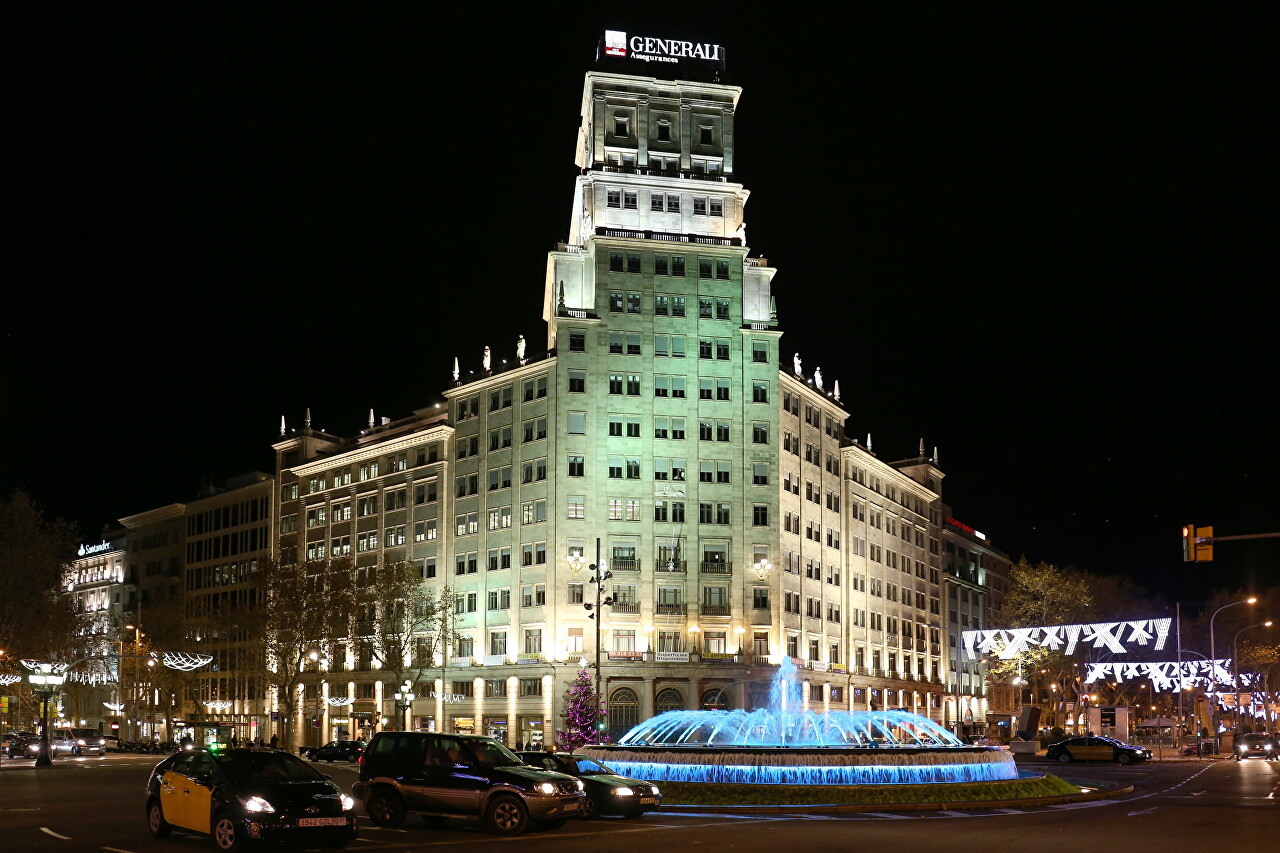Night Walk Along Gran Via
After watching the play of light in Torre Agbar, I headed towards the center along Gran Via (full name Gran Via de les Corts Catalanes), the longest street in Barcelona. Its length is 13.1 kilometers, the second in Spain and second only to Gran Vía de la Manga, which stretches along a sandbar along the La Manga Lagoon near Cartagena. The street follows the line of an ancient road that connected the coastal villages.
In three blocks, I saw the arena "Monumental" (La Monumental), which was opened on April 12, 1914 and was originally called Plaza de El Sport, it received its current name two years later. The arena is built of brick, and its style is a mixture of Moorish and Byzantine architecture. In 2010, the Catalan Parliament decided to ban bullfighting and on September 25, 2011, the last performance was held here.
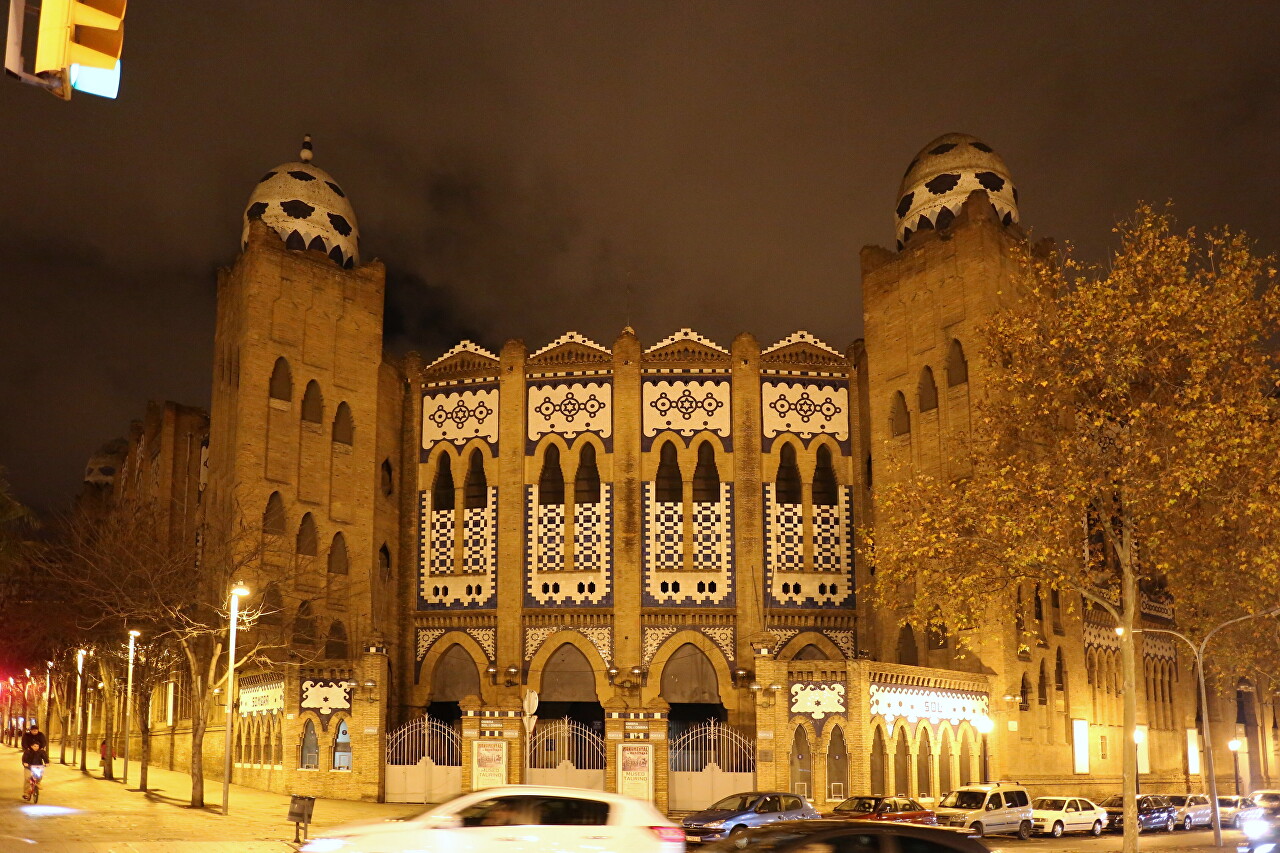
Two blocks further on, the Christmas decorations on the front of Bingo Billares Casino shine brightly on the left side. This is one of the largest gambling houses in Europe, its halls can accommodate up to 900 visitors, there are more than 250 slot machines. There are also several restaurants and cafes. Here you can get rid of excess money almost around the clock, from 9 to 6 in the morning.
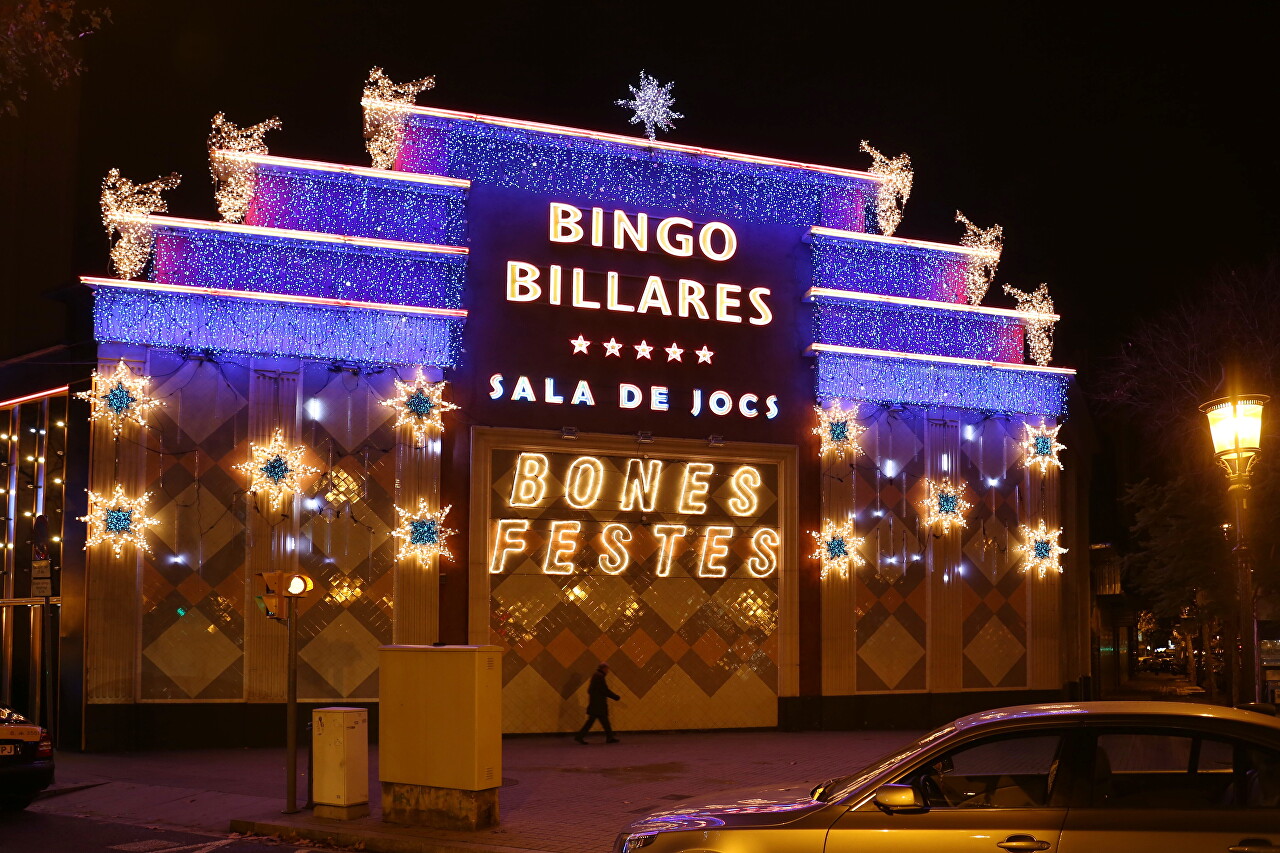
Beyond Tetuan Square, an endless line of luxury hotels begins. Hotel Havana is modestly but tastefully decorated. The building has a rich history: It was built in 1882 by order of Lorenzo Frader and originally bore his name (La Casa Lorenzo Fradera). The author of the project is the famous Catalan architect Josep Domínguez i Valls. The facade is designed in eclectic style and stands out with a large clock on the pediment. At the beginning of the twentieth century, the French consulate was located here, then the Northern fire insurance company. In 1920, Fradera sold the building and it was converted into the L'hotel de France. After some time, the hotel changed its name to Pensió Frascati, and the mezzanine was occupied by the Brown-Boveri electric machine company. Until the fifties, several owners and names were changed: Hotel Torres, Hotel Estoril, etc., while part of the building was rented out for commercial offices. Finally, the Gran Hotel Havana is located here with 90 seats, and the owner's apartment is located on the mezzanine. Later, the mezzanine floor was also occupied by the hotel's rooms and their number grew to 101. In 1991, the building was completely renovated, the interiors were rebuilt to meet modern requirements. Another floor was added, and a terrace with a swimming pool and a beautiful view of the city was placed on its roof.
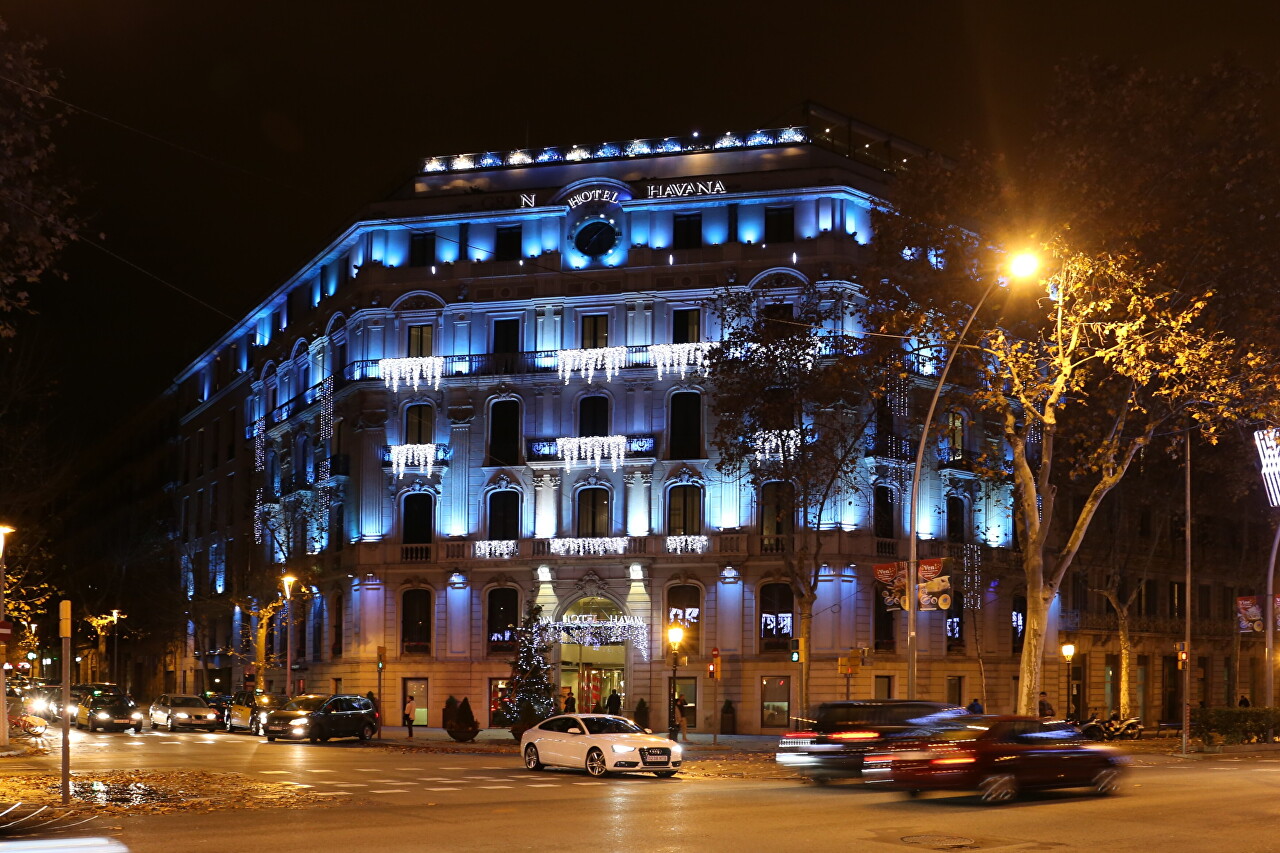
The five-star El Palace Barcelona Hotel has more than a century of history and is considered one of the most prestigious.
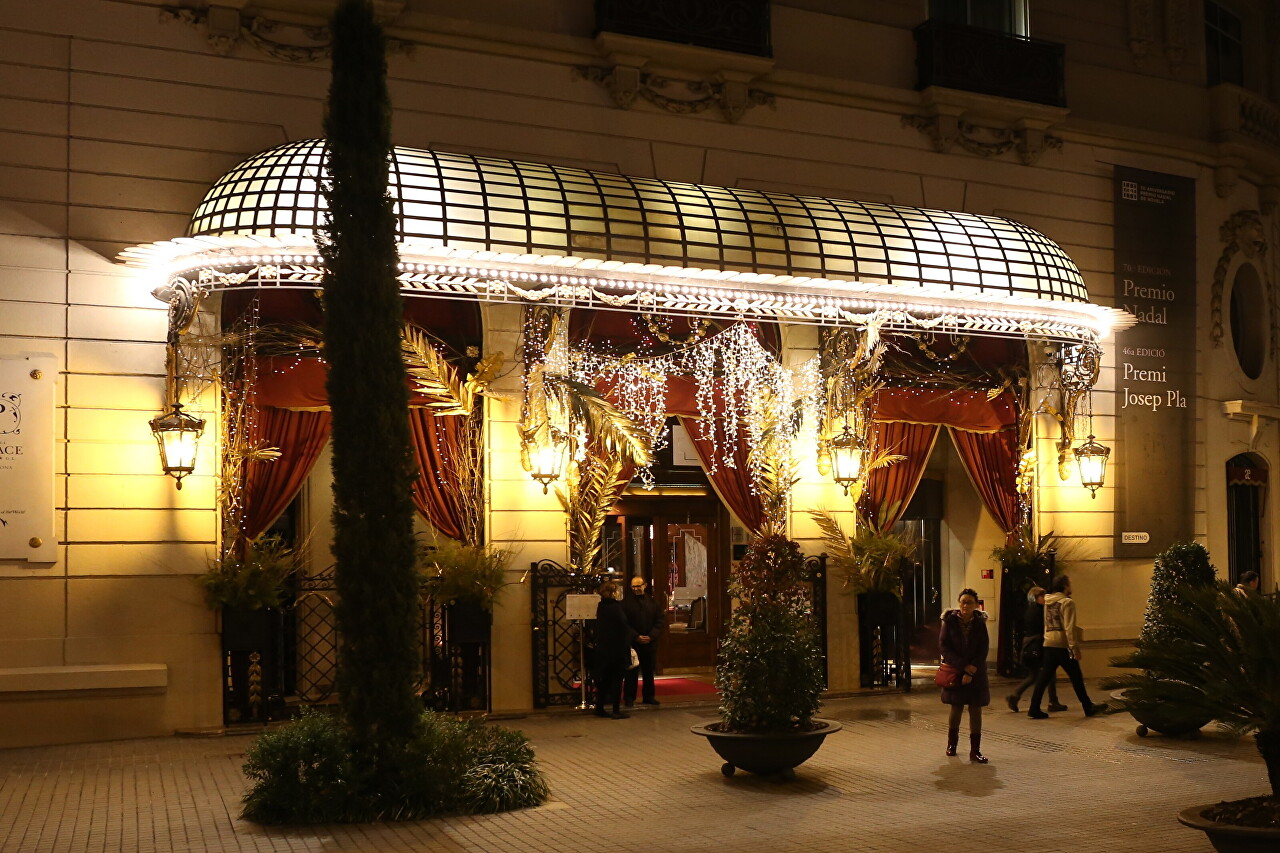
Most of the buildings are decorated with Christmas lights. Shop windows also remind you of the holiday.
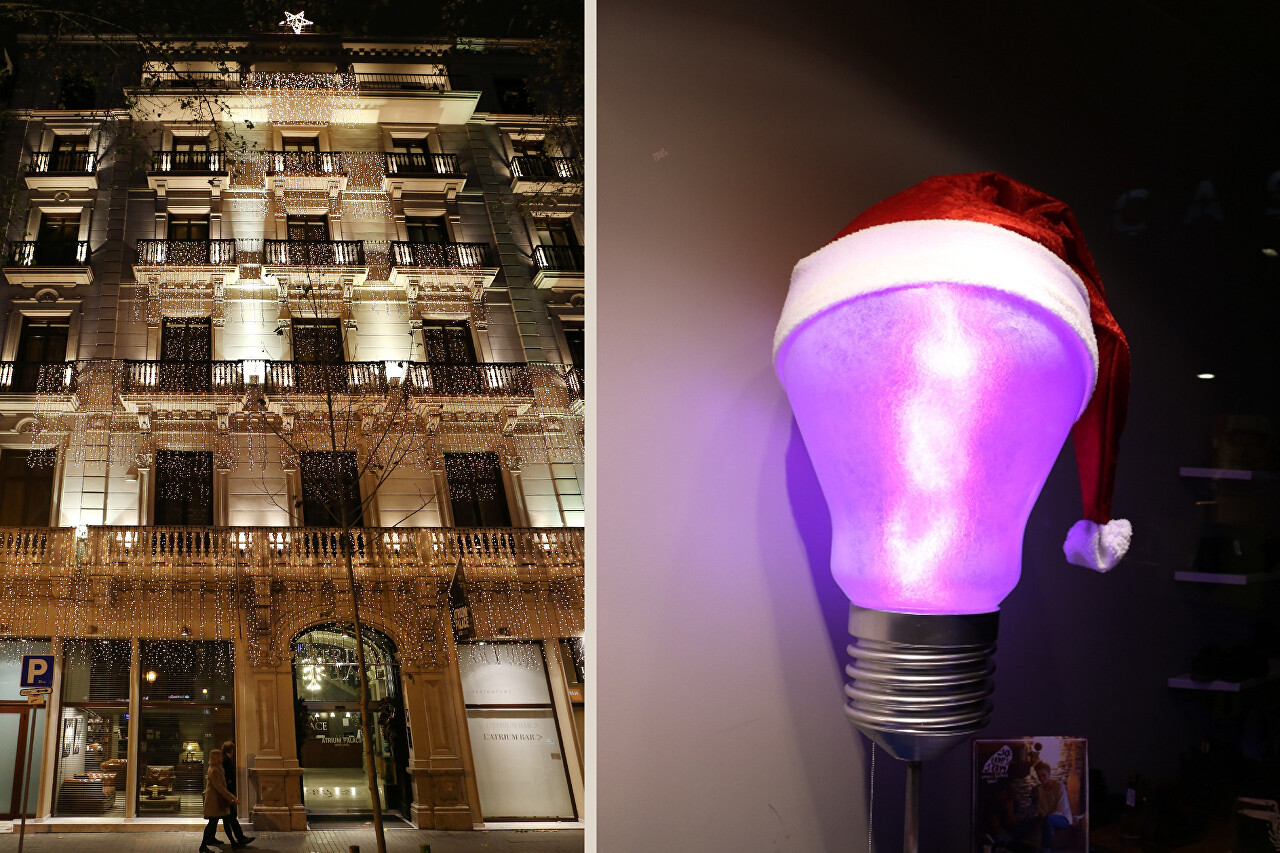
Today is Christmas evening and while walking along the Gran Via I didn't meet a single person, there was also almost no car traffic.
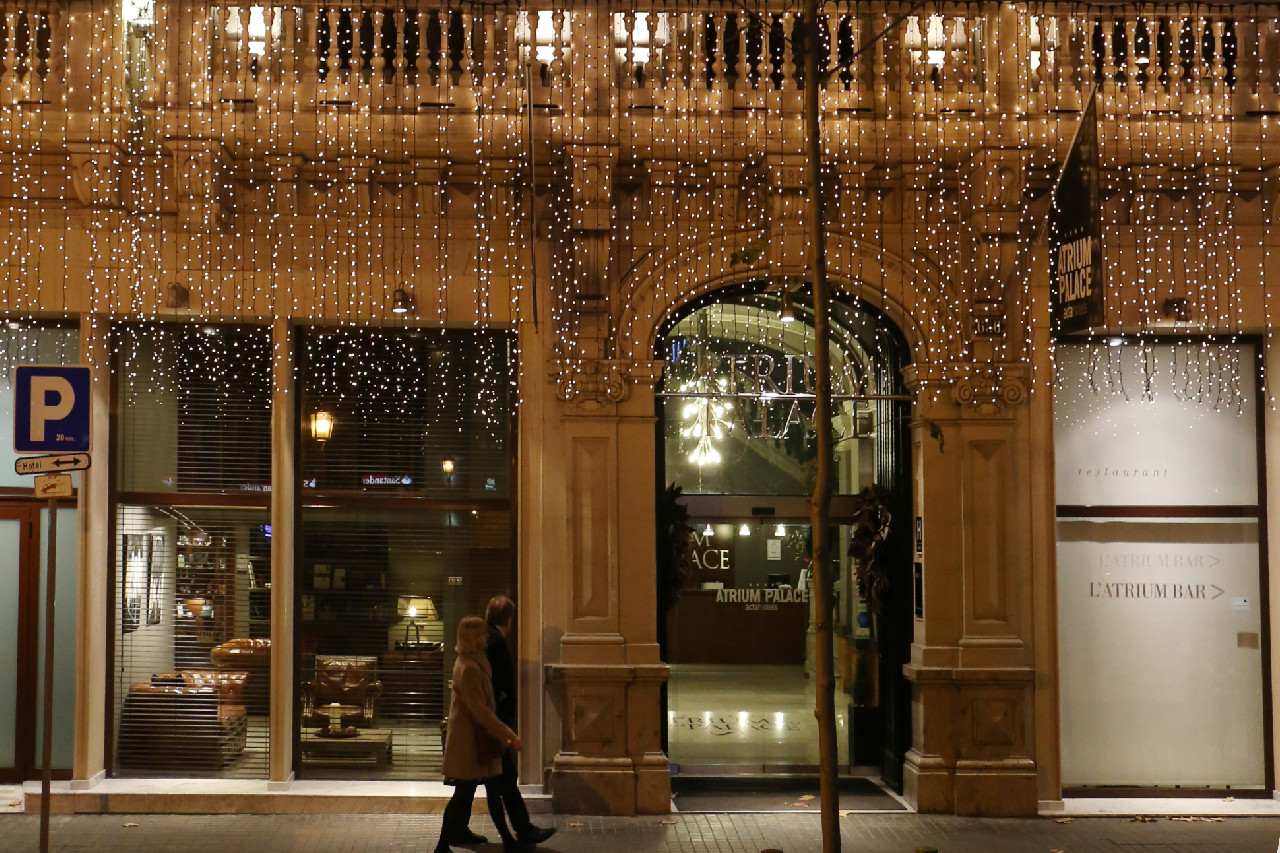
The intersection with Passeig de Gràcia forms a square with a fountain in the center. In the evening, the fountain pleases with a beautiful dynamic illumination.
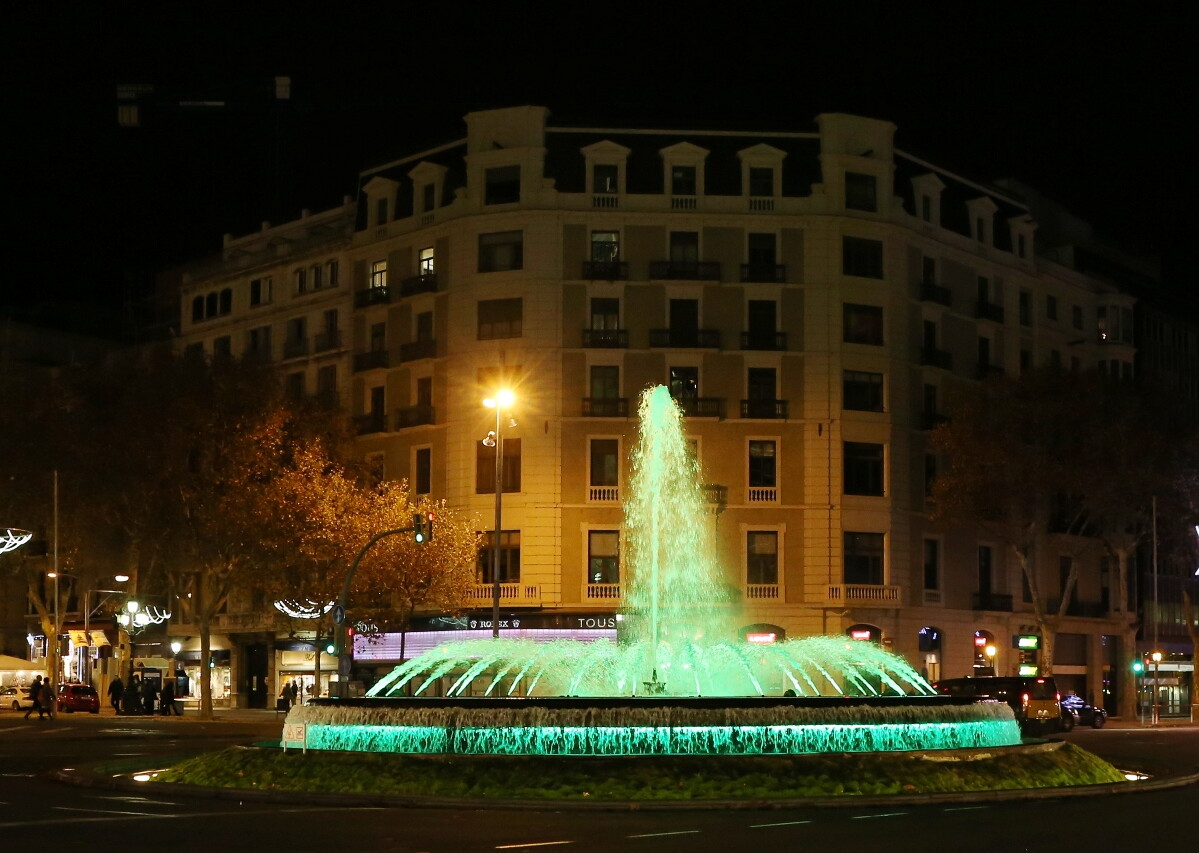
The southern corner of the square is formed by a 21-story building built for the Banco Vitalicio de España, which can be called a skyscraper by the standards of the first half of the twentieth century. It is built of reinforced concrete in the best traditions of the Chicago School of Architecture. Its design was completed in 1935, but due to the civil war, construction began only in 1942. At the time of completion, this building was the tallest in Barcelona and held this title until the sixties. Now the building belongs to the insurance company General Group and most of its space is occupied by retail space. In particular, the largest H&M store in Spain is located here.
